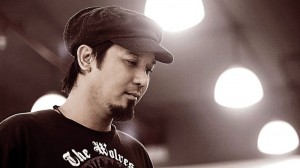If he had his way, filmmaker Topel Lee said, he’d stop making horror movies –which he has become identified with – and work on films that challenge his creativity in other ways.
Lee’s first horror project was the box-office hit “Ouija” (2007) starring Judy Ann Santos, Iza Calzado, Rhian Ramos and Jolina Magdangal. This was followed by “Sundo” (2009), headlined by Robin Padilla.
Then came “White House” (2010) featuring Gabby Concepcion, and most recently, “Tumbok,” with Cristine Reyes.
Lee has made four short films for Regal Entertainment’s “Shake, Rattle and Roll” franchise.
Obstacles
“After all those horror movies that I’ve made, it’s hard to get fresh ideas,” Lee told the Philippine Daily Inquirer. “So I research, I watch foreign directors or, sometimes, I ask colleagues how to best tweak a scene.”
Another obstacle for Lee is working with a scriptwriter whose stories are far removed from the truth. Admitting that he doesn’t have formal training in scriptwriting, he said he follows his instinct. “I revise the script if I have to but consult my producers.”
There were instances, he said, when his integrity as a director was put to the test. “Robin [Padilla] had a lot of demands while we made ‘Sundo.’ I didn’t want to compromise. His ideas were very different from mine. It came to a point where we had to sit down with the producers.”
Lee’s dream project is to make a film like Mel Gibson’s “Braveheart.” He said, “Young Filipinos need to know who our real heroes are … Even Hollywood films invoke patriotism. You always see an American flag in the background, even if it’s just a ‘Spiderman’ movie.”
“Braveheart,” released in 1995, is an epic historical drama about a 13th century knight who gains recognition when he comes to the forefront of the First War of Scottish Independence. It won five awards, including Best Picture and Best Director, at the 68th Academy Awards.
“It’s hard to keep directing horror movies, but I still accept offers,” Lee said. “I consider myself lucky to be given the chance to work. Not all filmmakers get to do this. I just try to make it worth the viewers’ time and money.”
Family of artists
Lee comes from a family of artists. His father, Ramon (Mon Lee), and uncle, Roque (Roxlee), created the popular cartoon strip “Cesar Asar” in 1981. The Lee brothers shot their own animated short films and helped lay the groundwork for today’s vibrant indie animation scene.
The young Lee recalled “helping around” until he studied at the Mowelfund Film Institute and began working on short films of his own. In 2005, he wrote and directed “Dilim,” which became a finalist at the Cinema One Originals Digital Film Festival in 2006. A year later, his comedy flick, “My Kuya’s Wedding” was released. In 2009, he made “Wapakman,” featuring boxing champ Manny Pacquiao.
Given the chance, Lee said, he’d make comedy films like “Knocked Up” or “Hangover.” He’s also been moved by “Not One Less,” a period drama by Zhang Yimou. “But I know producers will not like that, thinking nobody would watch it.”
Think global
Filipinos should think global now, Lee observed. “Koreans are very aggressive –they reach out to a global audience and generate stories that are fresh, with treatments that are not formulaic. Filipino movies tend to have the same story lines that no longer stimulate viewers. I suggest we experiment on new things.”
Lee recently joined the film production outfit Reality Entertainment as in-house director. The company is a partnership between filmmaker Erik Matti (“Pasiyam,” “Exodus”), music video and commercial director AF Benaza and film producer Dondon Monteverde. They are the same team behind production house Revolver Studios.
Also in Reality’s fold are art director Richard Somes, film editor and director Borgy Torre, filmmaker Jerrold Tarog, fight director Larry Ang, production designer Peter Collias and TV commercial director Joel Limchoc.
Lee said Reality would co-produce his next project, a suspense-thriller titled “Pagpag,” based on local superstitious beliefs about going home from a wake. He explained, “Old people say a person shouldn’t go home directly from a wake to confuse the spirit that may be following him.”


